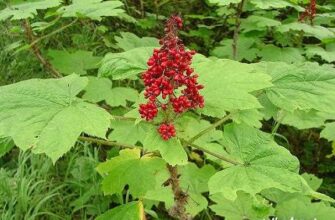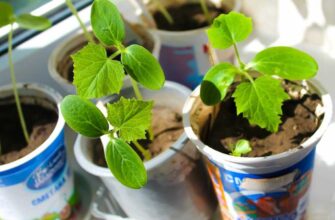- Нертера: уход, фото, виды
- Уход за нертерой
- Виды нертеры
- Фото нертеры
- Комнатное растение нертера
- Уход за нертерой
- Уход за нертерой в домашних условиях
- Полив
- Освещение
- Температура и влажность
- Пересадка
- Фотографии нертеры
- Описание видов нертеры
- Нертера – красивое растение для декорации интерьера
- Итоги
- Как вырастить нертеру из семян
- Выбор семян
- Подготовка грунта
- Посев семян
- Уход за растениями
- Нертера: соцветия и фрукты
- Размножение нертеры черенками
- Вредители и болезни нертеры
- 1. Паутинные клещи
- 2. Шероховатость листьев
- 3. Почвенные организмы
- Особенности полива нертеры
- Где лучше размещать нертеру
- Удобрение для нертеры: как выбрать
- Основные требования к удобрению для нертеры
- Как правильно применять удобрение для нертеры
- Вопрос-ответ:
- Как ухаживать за нертерой?
- Какие виды нертеры существуют?
- Можно ли выращивать нертеру из семян?
- В чем особенности ухода за нертерой зимой?
Нертера (Nertera) — это род многолетних травянистых растений семейства руноцветных. Род насчитывает около 50 видов, которые произрастают в Австралии, Новой Зеландии, Южной Америке и других регионах. Нертеры отличаются компактным размером и плотной зеленой листвой. Они являются популярными у садоводов и цветоводов, которые выращивают их в домашних условиях или используют для оформления садовых ансамблей.
Уход за нертерой довольно прост и не требует особых навыков. Растение предпочитает яркий рассеянный свет, поэтому его следует располагать в окне с восточной или западной стороны. Поместите растение подальше от прямых солнечных лучей, чтобы избежать ожогов на листве. Нертера требует регулярного полива, но нельзя допускать застоя воды в горшке. Зимой полив уменьшают, но не допускают полного пересыхания земляного кома. Раз в несколько недель растение можно удобрять слабым раствором удобрений для комнатных растений.
Фото нертеры часто используют в дизайне садов и открыток. Характерными особенностями растения являются яркие красные ягоды, которые появляются после цветения. Они представляют собой настоящую драгоценность для цветоводов и привлекают внимание всех окружающих. Нертера отлично смотрится на фоне других растений, создавая яркий акцент в саду. В домашних условиях нертера также представляет интерес, а её небольшие размеры и обильное цветение делают её отличным вариантом для оформления оконных полок и столешниц.
Нертера: уход, фото, виды
Уход за нертерой
Нертера – растение, требующее особого ухода для сохранения своей красоты и здоровья. Оно предпочитает яркое, но рассеянное светлое освещение, поэтому лучшее место для нертеры – окно на восточной или западной стороне. Растение предпочитает умеренный полив, земля в горшке должна быть всегда влажной, но не пересыхать полностью. Также нертера требует регулярного удобрения органическими или минеральными удобрениями.
Виды нертеры
Существует около 80 видов нертеры, но наиболее популярными среди домашних цветоводов являются нертера десятипрстная (Nertera granadensis) и нертера скальная (Nertera depressa). Нертера десятипрстная имеет яркие оранжевые ягодки и глянцевые зеленые листья, а нертера скальная отличается своим низким ростом и компактной формой.
Фото нертеры
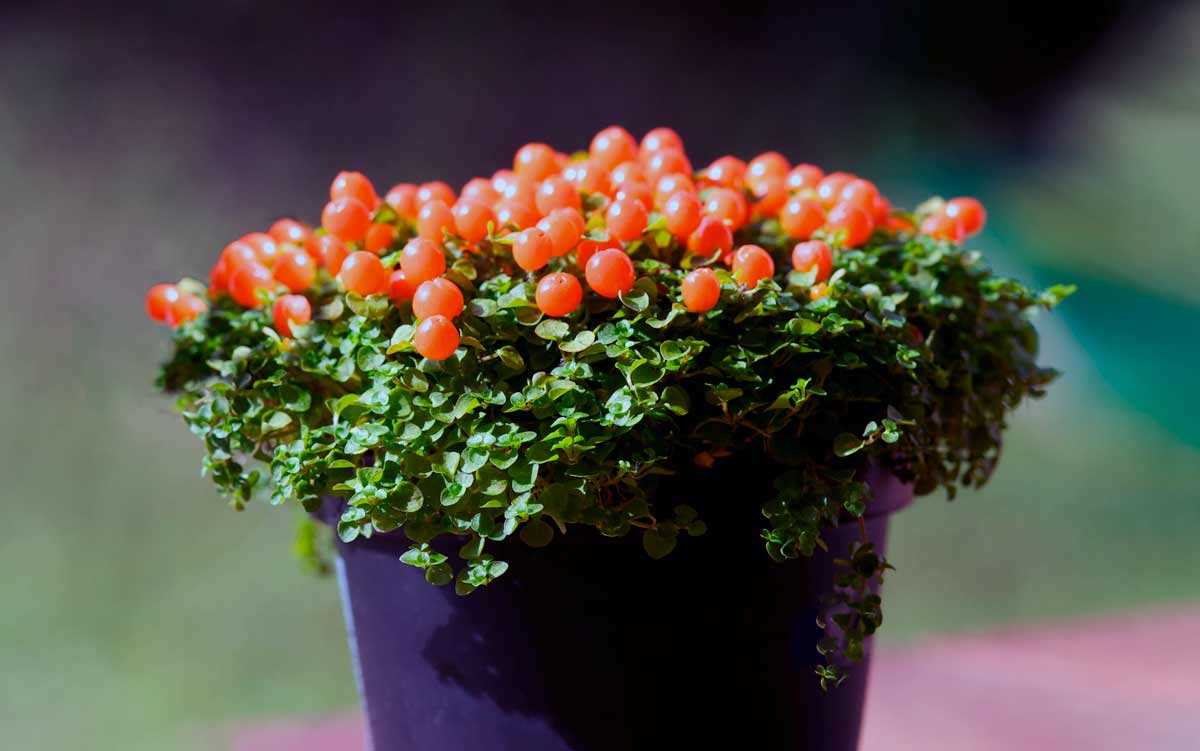
На фотографиях нертера представлена во всей своей красе. Вы можете увидеть яркие оранжевые ягодки, которые становятся особенно насыщенными в зрелом состоянии. Зеленые листья сияют свежестью и придают растению естественный вид. Нертера привлекает внимание своей яркостью и уникальным внешним видом.
Комнатное растение нертера
Нертера – это маленькое, но очень изящное растение, которое в народе также называют Нертера джормандиана или Благовонная трава. Оно отличается своей нежной зеленой листвой и яркими оранжевыми плодами, которые появляются на его ветвях.
Нертера привлекает внимание своей компактностью и необычной формой. Его листья мелкие, округлые и сияющие, что создает ощущение нежности и гармонии. Отсюда и второе название растения – Благовонная трава, так как эти листья имеют специфический, приятный аромат, напоминающий запах цитрусовых.
Комнатная нертера обладает небольшими размерами и отлично подходит для украшения интерьера. Ее можно разместить на столе, полке или подвесить в горшке. При этом, растение быстро приживается в новых условиях и не требует особого ухода.
Уход за нертерой
Для процветания нертеры необходимо достаточное освещение, но она не переносит прямое солнечное освещение. Идеально для нее подходит восточное или западное окно. Растение требует умеренного полива – земля должна быть влажной, но не перенасыщенной влагой.
Также, важно сохранять оптимальную температуру и влажность в помещении. Летом растение предпочитает нижнюю планту, а зимой – комнатную температуру. Чтобы создать оптимальные условия, рекомендуется периодически опрыскивать растение и избегать перегрева или переохлаждения.
Нертера не требует регулярного подкорма, но ее рекомендуется удобрять раз в 1-2 месяца в период активного роста. При этом необходимо использовать специальные универсальные удобрения для комнатных растений.
В целом, уход за комнатной нертерой не требует больших усилий и затрат времени. Однако, регулярное внимание и забота помогут растению чувствовать себя комфортно и обеспечат ему долгую и яркую жизнь.
Уход за нертерой в домашних условиях
Нертера — это небольшие растения с яркой зеленой листвой и красивыми красными ягодами. Для того чтобы нертера хорошо себя чувствовала в домашних условиях, необходимо правильно ухаживать за ней.
Полив
Нертера требует умеренного полива. Важно не переувлажнять почву, чтобы не вызывать гниение корней. Поливайте растение только тогда, когда верхний слой почвы полностью высохнет. В зимний период полив уменьшается.
Освещение
Для нертеры идеальным местом будет яркое diffused освещение. Растение не переносит прямых солнечных лучей, так что лучше помещать его на окна с северной или восточной стороны. Если ваше окно смотрит на юг, то рекомендуется затенять нертеру от прямых лучей.
Температура и влажность
Оптимальная температура для нертеры составляет 18-22°C. Слишком высокая температура может привести к высыханию почвы и ожогам листьев, а слишком низкая — к заморозкам. Чтобы обеспечить оптимальную влажность, можно поставить горшок на поддон с влажным гравием или использовать увлажнитель воздуха.
Пересадка
Если нертера переросла свой горшок или земля в нем стала плотной, то растение нужно пересадить. Оптимальное время для пересадки — весна или начало лета. Пересаживайте нертеру в горшок, который немного больше предыдущего, используя специальную грунтовую смесь для комнатных растений.
Следуя простым правилам ухода, вы сможете наслаждаться красивым и здоровым ростком нертеры в домашних условиях.
Фотографии нертеры
Нертера, или жемчужинка, как иногда называют этот растение, имеет интересный и привлекательный внешний вид. Светло-зеленые листочки малого размера образуют густые ковры, на которых располагаются крошечные красные ягодки. Это создает яркий контраст и делает нертеру очень декоративной и привлекательной для глаз.
Фотографии нертеры демонстрируют ее компактные размеры и удивительную густоту листьев. Проблеск красных ягодок на зеленом фоне выглядит очень эффектно и привлекает взгляд. Фотографии также показывают, как хорошо нертера выглядит в разных видах озеленения: на газонах, клумбах, в горшках и вазонах.
Прекрасно сочетаясь с другими растениями, нертера создает эффектный акцент и придает особый шарм любому ландшафту.
Фотографии нертеры могут быть полезными для тех, кто хочет использовать это растение в своем саду или домашней коллекции. Они помогут представить, как отдельные экземпляры или группы нертеры будут выглядеть в конкретной среде и совместно с другими растениями.
Описание видов нертеры
Нертера красная (Nertera granadensis) — это небольшое многолетнее растение с прямостоячими стеблями, с которых расходятся низкие побеги. Листья нертеры красной маленькие, округлые, зеленые, на длинных черешках. Цветы мелкие, белые или кремовые, собраны в метелки на концах побегов. После цветения образуются яркие красные или оранжевые ягоды, которые выглядят очень декоративно.
Нертера ползучая (Nertera linnaeana) — это низкорослое прямостоячее растение, которое также имеет побеги ползучего типа. Листья нертеры ползучей маленькие, овальные, зеленые. Цветы нертеры ползучей ярко-оранжевые, собраны в множестве на концах побегов. После цветения образуются ядовитые оранжевые ягоды, которые, однако, выглядят очень эффектно.
Нертера розовая (Nertera pink pearl) — это растение с небольшими стеблями, с которых расходятся ползучие побеги. Листья нертеры розовой маленькие, округлые, зеленые. Цветы нертеры розовой розовые или красно-розовые, собраны в кисти на концах побегов. После цветения образуются красные ягоды, которые выглядят очень привлекательно на фоне зеленых листьев.
Нертера зимостойкая (Nertera depressa) — это многолетнее растение, которое характеризуется низкими побегами, удлиненными ветвями и маленькими кожистыми листьями. Цветы нертеры зимостойкой незначительные, белые или кремовые, собраны в метелки. После цветения образуются красные ягоды, которые долго остаются на растении и добавляют ему декоративности.
Нертера – красивое растение для декорации интерьера
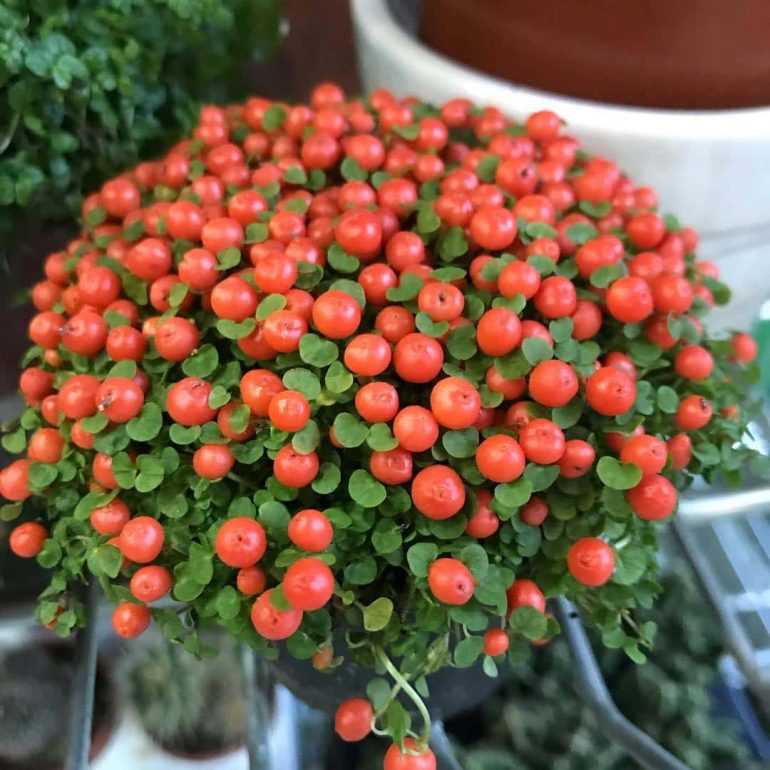
Нертера (Nertera) – это небольшое цветущее растение, которое также известно как коралловая ягода или ягодная трава. Оно привлекает внимание своими эффектными маленькими ярко-красными ягодами, которые окружены зелеными листьями. Благодаря своей необычной внешности, нертера стала популярным растением для оформления домов и квартир.
Нертера является неприхотливым растением и отлично чувствует себя в помещении. Она предпочитает яркое, но недиректорное освещение, поэтому ее можно размещать на окнах с восточной и западной сторонами. Кроме того, нертера не требует особого ухода – достаточно регулярного полива и подкормки удобрениями для комнатных растений.
Это растение обладает не только привлекательным внешним видом, но и полезными свойствами. Нертера способствует очищению воздуха от вредных веществ и увлажнению, что положительно влияет на здоровье и настроение людей. Кроме того, ягоды нертеры имеют приятный кисло-сладкий вкус и могут использоваться для приготовления вкусных десертов и напитков.
Итоги
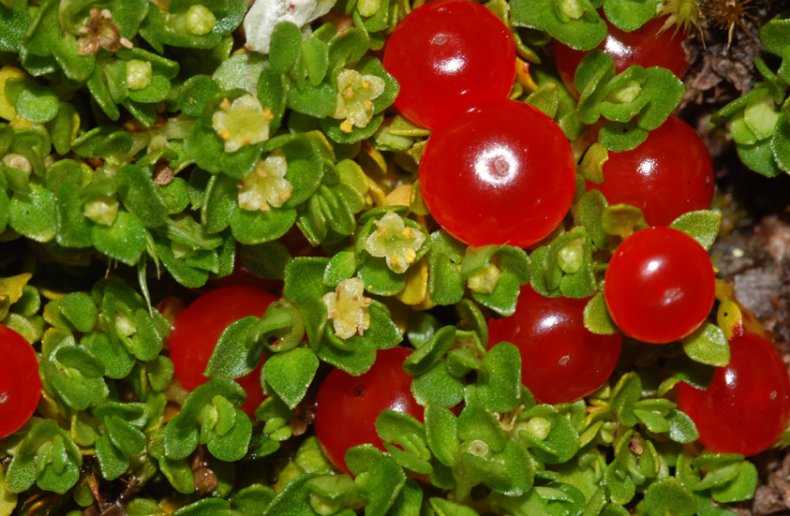
- Нертера – красивое растение с яркими красными ягодами.
- Она отлично подходит для оформления интерьера дома или квартиры.
- Нертера неприхотлива в уходе и предпочитает места с ярким, но недиректорным освещением.
- Это растение способствует очищению воздуха и увлажнению в помещении.
- Ягоды нертеры можно использовать в кулинарии для приготовления вкусных десертов и напитков.
Как вырастить нертеру из семян
Выращивание нертеры из семян — это увлекательный процесс, который позволяет получить здоровые и красивые растения. Чтобы успешно вырастить нертеру из семян, следует придерживаться определенных правил.
Выбор семян
Первое, что необходимо сделать, это выбрать качественные семена нертеры. Семена лучше всего покупать в специализированных магазинах или у проверенных производителей. Обращайте внимание на срок годности и состояние упаковки.
Подготовка грунта
Для посева нертеры подготовьте легкую и питательную почву. Смешайте торф и песок в пропорции 1:1. Такой грунт должен быть рыхлым и влажным.
Посев семян
Посев семян нертеры производится поверхностно. Равномерно распределите семена по поверхности грунта и немного присыпьте песком. Не забудьте увлажнить грунт после посева.
Так стоп!!! Вы всё ещё не подписаны на наши каналы в Телеграмм и Дзен? Посмотрите: ТГ - (@historyfantasydetectivechat) и Дзен (https://dzen.ru/myshortsstorys)
Уход за растениями
Нертера требует особого ухода после посева. Регулярно освежайте почву, удаляйте сорняки и поддерживайте оптимальную влажность. Поместите горшки с нертерой в яркое место, но избегайте прямого солнечного света.
Следуя этим рекомендациям, вы сможете вырастить здоровые и красивые нертеры из семян. Не забывайте ухаживать за растениями, и они порадуют вас своей красотой и зеленым цветом.
Нертера: соцветия и фрукты
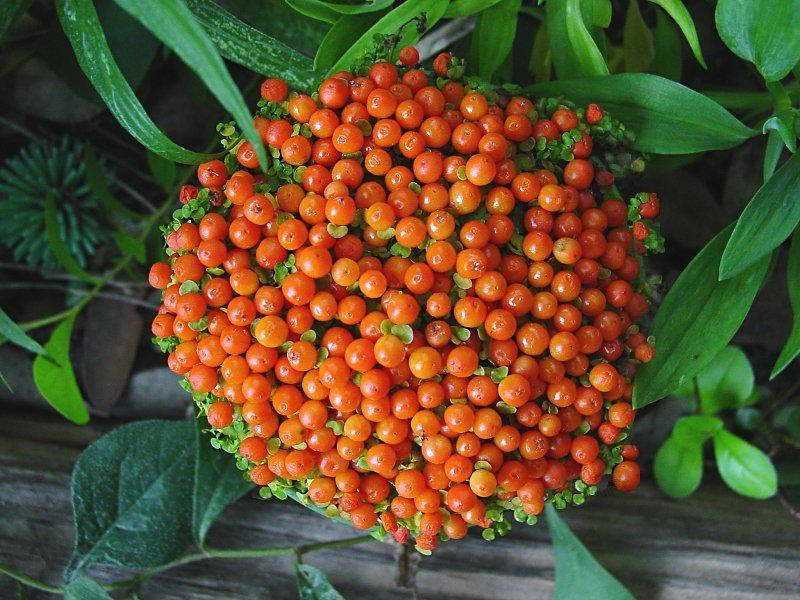
Нертера – это растение семейства рутовых, которое известно своими красивыми и нежными соцветиями. Соцветия нертеры имеют округлую форму и состоят из множества маленьких цветков различных оттенков. Они собраны в компактные шарики или кисти, которые придают растению привлекательный внешний вид.
Когда нертера цветет, ее соцветия напоминают небольшие яркие ягоды. Они могут иметь разные цвета – от ярко-красного до белого или зеленого. Красивые соцветия нертеры часто сравнивают с маленькими цветочными мячиками или россыпью драгоценных камней на зеленой траве.
Соцветия нертеры являются ярким акцентом в декоративности растения и привлекают взгляды окружающих. Они отлично смотрятся в единичном экземпляре и становятся настоящей арт-обработкой, украшением дома или офиса. Кроме того, соцветия нертеры могут использоваться для создания букетов, композиций и декоративных элементов в интерьере.
Помимо красивых соцветий, нертера поражает своими фруктами. Они очень маленькие – размером всего с горошину – и покрыты яркой кожицей. У каждого фрукта есть маленький хвостик, который позволяет ему легко прикрепляться к любой поверхности, в том числе и к шерсти животных. Фрукты нертеры имеют ярко-красный, оранжевый или желтый цвет и выглядят очень декоративно, особенно на фоне зеленых листьев.
Размножение нертеры черенками
Нертера — нежнейшее растение, которое по своей природе является неразлучным со своим корневым комом. Именно поэтому для его размножения часто используется метод черенкования.
Вот несколько шагов, по которым можно размножить нертеру черенками:
- Выбор растения: Выберите здоровую и активно растущую нертеру, чтобы быть уверенным в успехе черенкования.
- Подготовка черенков: Избегайте черенки с зрелыми листьями, выбирайте те, которые имеют только несколько пар молодых и здоровых листьев.
- Обрезка черенков: С помощью острого и чистого садового ножа отрежьте черенки от материнского растения. Идеальным вариантом будет черенок длиной около 5-7 сантиметров.
- Подготовка почвы: Подготовьте легкую и питательную почву, добавив в нее перлит или вермикулит для обеспечения хорошего дренажа и влажности.
- Посадка черенков: Сделайте влажные ямки в подготовленной почве и посадите черенки, придав им небольшой уклон.
- Уход за черенками: Убедитесь, что черенки находятся в тени и обеспечьте им постоянную влажность почвы, регулярно поливая их.
Следуя этим простым инструкциям, вы сможете успешно размножить нертеру черенками и наслаждаться красотой этого растения в своем саду или дома.
Вредители и болезни нертеры
1. Паутинные клещи
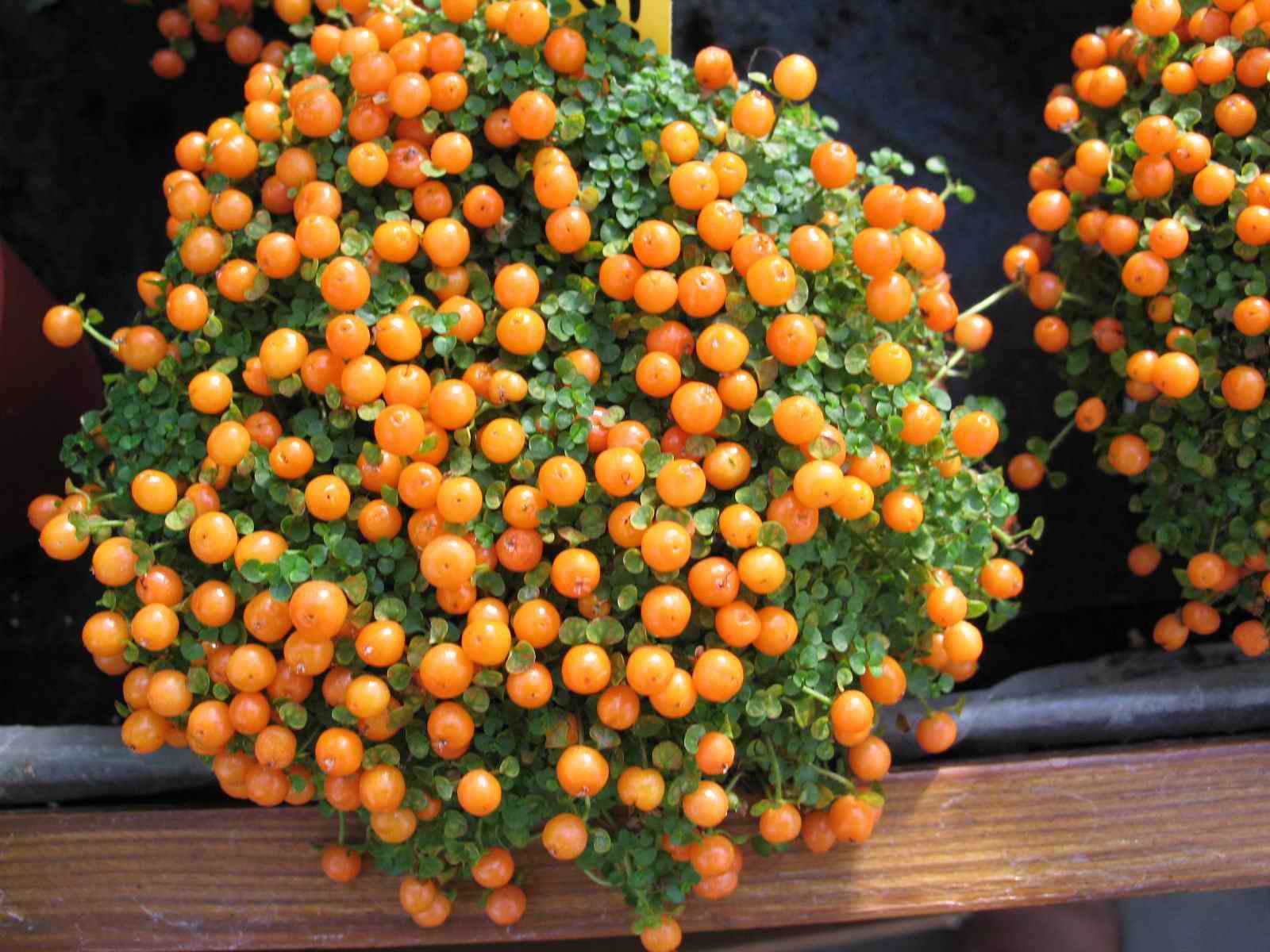
Одним из наиболее распространенных вредителей нертеры являются паутинные клещи. Эти маленькие паразиты питаются соками растения и могут привести к его гибели. При поражении нертеры клещами листья становятся бледными, желтые пятна и серебристые отзывы появляются на их поверхности. Если вовремя не принять меры по борьбе с паутинными клещами, растение может погибнуть.
2. Шероховатость листьев
Еще одной проблемой, с которой часто сталкиваются владельцы нертеры, является шероховатость листьев. Это заболевание вызвано грибком и проявляется в виде появления белого налета на листьях растения. При развитии болезни, листья становятся хрупкими и ломкими, что приводит к их опадению. Для борьбы с шероховатостью листьев необходимо использовать специальные препараты и контролировать уровень влажности воздуха.
3. Почвенные организмы

Нертера также может подвергаться атаке различных почвенных организмов, таких как тли, муравьи и гусеницы. Эти вредители питаются корнями нертеры, что приводит к ослаблению растения и его гибели. Для борьбы с почвенными организмами рекомендуется применять специальные инсектициды или механические методы уничтожения вредителей, такие как ручной сбор или проливание горячей водой.
Особенности полива нертеры
Нертера — красивое и нежное растение, требующее особого внимания при поливе. Правильный режим полива способствует здоровому росту и развитию растения.
Перед поливом необходимо убедиться, что верхний слой почвы в горшке высох. Регулярное проверка влажности почвы позволит избежать переувлажнения и гниения корней.
Поливайте нертеру мягкой и подогретой водой, которая не содержит хлора и других вредных примесей. Используйте стоячую воду, чтобы она успела набрать комнатную температуру.
Нертера предпочитает умеренное поливание. Лучше поливать регулярно, но в небольших количествах. Избегайте застоя воды в горшке.
При поливе старайтесь не попадать на листья и цветы растения, чтобы избежать их гниения и развития грибковых инфекций.
В зимний период умеренно увлажняйте нертеру, так как в это время года она находится в состоянии покоя и активно не растет.
Следуя данным рекомендациям, вы обеспечите здоровый рост и красивый внешний вид своей нертеры.
Где лучше размещать нертеру
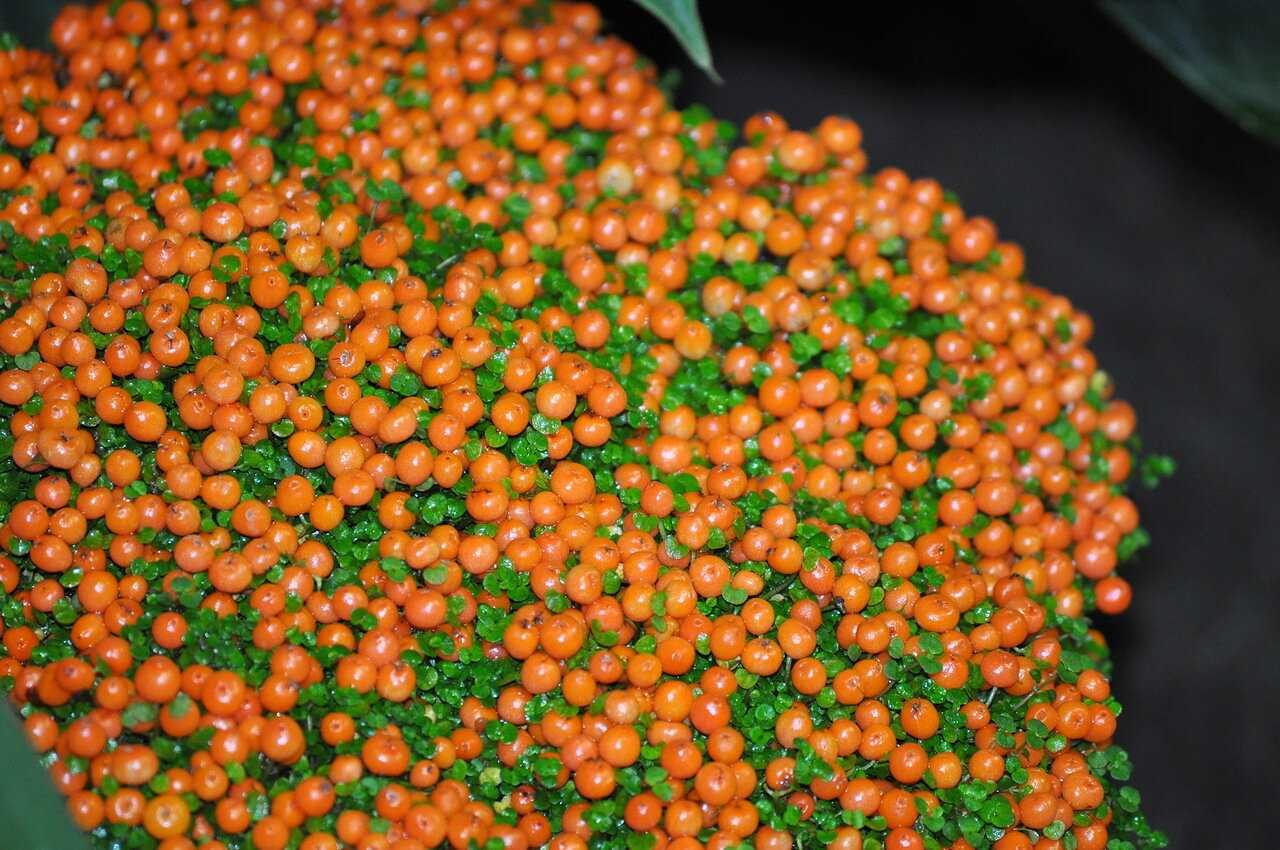
Нертера — неприхотливое и удивительное растение, которое может быть размещено в различных местах внутри и вне помещений. Однако, при выборе места для нертеры необходимо учесть ее особенности и предпочтения.
Первоначально необходимо выбрать место, где будет достаточно яркого, но рассеянного света. Нертера обычно предпочитает полутень или тень, поэтому ее лучше разместить в помещении с окнами восточной или западной стороны, чтобы она получала утреннее или вечернее солнце.
Кроме того, для нормального роста и развития нертера требует влажной почвы. Поэтому рекомендуется размещать ее в помещении с хорошей вентиляцией или использовать искусственное увлажнение воздуха. Кроме того, рекомендуется регулярно опрыскивать листья нертеры водой.
Важно помнить, что нертера не выносит засухи, поэтому ее нельзя размещать рядом с обогревательными приборами или вблизи прямых солнечных лучей. Более того, она не переносит перепады температур, поэтому важно выбрать для нее устойчивое постоянное место и избегать перемещений.
Итак, при выборе места для размещения нертеры необходимо учесть ее предпочтения в отношении света, влажности и температуры. Идеальным местом для размещения нертеры будет помещение с рассеянным светом, умеренной влажностью и стабильной температурой.
Удобрение для нертеры: как выбрать
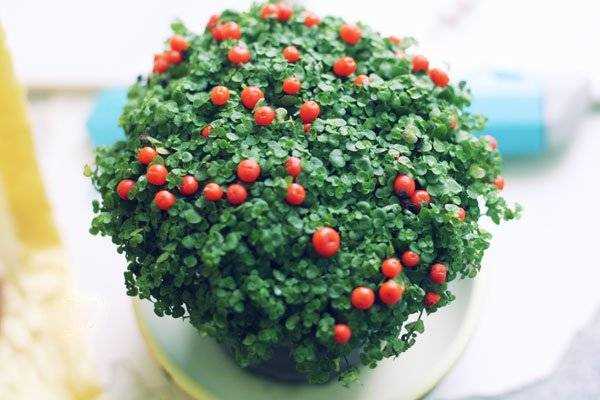
Нертера – это красивое и нежное растение, которое требует особого ухода и внимания. Одним из важных аспектов заботы о нертере является подбор правильного удобрения. Делая правильный выбор, можно значительно улучшить рост и развитие растения.
Основные требования к удобрению для нертеры
Удобрение для нертеры должно иметь следующие особенности:
- Сбалансированный состав. Удобрение должно содержать все необходимые микроэлементы, чтобы обеспечить полноценное питание растения.
- Низкая концентрация азота. Нертера предпочитает не слишком плодородные почвы, поэтому удобрение должно содержать небольшое количество азота.
- Высокое содержание калия и фосфора. Эти элементы особенно важны для развития корневой системы и стимулирования цветения растения.
- Природные компоненты. Желательно выбирать удобрения, содержащие природные компоненты, такие как органические вещества или водорастворимые минералы.
Как правильно применять удобрение для нертеры
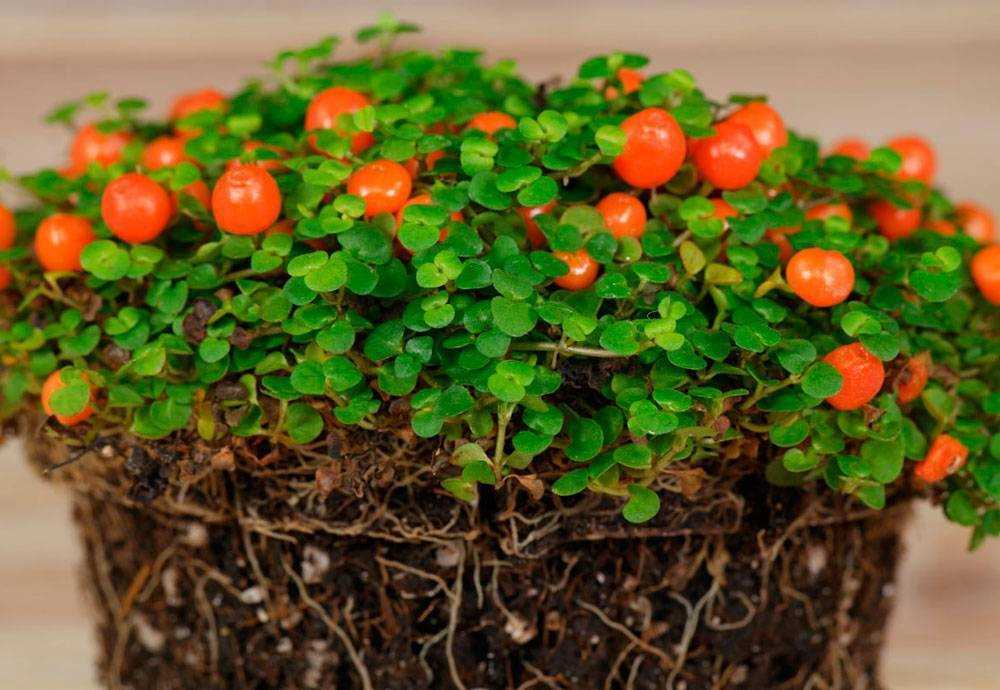
Для достижения наилучших результатов при применении удобрения для нертеры, следуйте следующим советам:
- Соблюдайте дозировку. Перед применением удобрения обязательно изучите инструкцию и следуйте рекомендуемым дозировкам.
- Применяйте удобрение в нужное время. Нертера требует удобрения в период активного роста и цветения. Следуйте рекомендациям производителя или консультируйтесь с опытными садоводами.
- Распределяйте удобрение равномерно. Постарайтесь равномерно распределить удобрение по поверхности почвы вокруг растения.
- Не переусердствуйте. Переизбыток удобрения может негативно повлиять на здоровье растения. Следуйте рекомендуемым дозировкам и не переусердствуйте.
Выбор правильного удобрения для нертеры — это важный шаг к здоровью и красоте растения. Следуйте рекомендациям и заботьтесь о своей нертере с любовью, и она порадует вас своим здоровьем и яркостью.
Вопрос-ответ:
Как ухаживать за нертерой?
Нертера требует яркого, но рассеянного света, поэтому ее следует размещать в помещении с окнами на восток или запад. Уход за нертерой включает в себя регулярное поливание с применением мягкой воды, подкормку с декабря по сентябрь, умеренное увлажнение воздуха и регулярное обрызгивание листьев с использованием фильтрованной или отстоявшей воды. Температура для нертеры должна быть в пределах 15-25 градусов Цельсия, а влажность воздуха около 60-70%. Нертера также нуждается в регулярной подкормке удобрениями для комнатных растений.
Какие виды нертеры существуют?
Существует несколько видов нертеры, в том числе Nertera granadensis, Nertera depressa и Nertera repens. Все они имеют небольшие круглые ярко-красные ягоды, которые делают их декоративными растениями для интерьера. Отличие между видами заключается в размере и форме листьев, а также в общей высоте и раскидистости растения.
Можно ли выращивать нертеру из семян?
Да, нертеру можно вырастить из семян. Для этого следует приобрести семена нертеры в специализированном магазине или сделать заказ через интернет. Семена следует посадить во влажную почву на глубину около 1 сантиметра и держать при температуре около 20-25 градусов Цельсия. После появления ростков, растение можно пересадить в отдельный горшок и продолжить ухаживать за ним как за взрослой нертерой.
В чем особенности ухода за нертерой зимой?
Зимой нертера нуждается в особых условиях ухода. Так как она является тропическим растением, ей нужно обеспечить постоянную температуру в помещении от 15 до 18 градусов Цельсия. Важно не переувлажнять почву и не допускать пересыхания корней. Растение необходимо периодически опрыскивать, чтобы поддерживать влажность воздуха около 60-70%. В зимний период частота полива должна быть снижена, растение не нуждается в частом подкормке, а также не требует яркого освещения.





